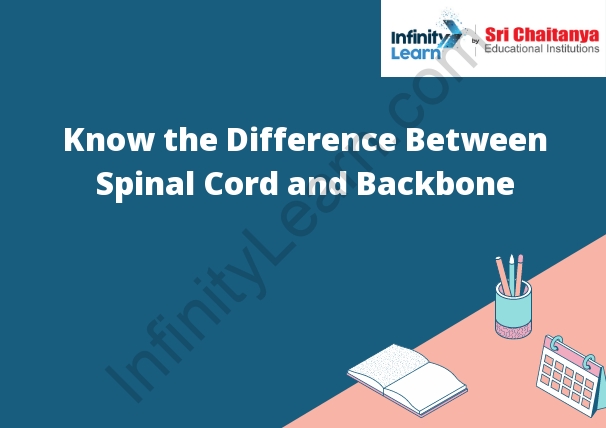Table of Contents
Spinal Cord and Backbone; Organization of the Spine
The spinal cord is a long, thin, white bundle of nerves that runs down the middle of the back. It carries messages from the brain to the rest of the body. The backbone, or spinal column, is a series of 33 bones that protect the spinal cord. The backbone is divided into five sections, called vertebrae. The vertebrae are named for the type of bone they are made of: cervical (neck), thoracic (chest), lumbar (lower back), sacral (pelvic), and coccyx (tailbone). Know the Difference Between Spinal Cord and Backbone.

1. Spinal Nerves:
There are thirty-one pairs of spinal nerves. Each nerve arises from the spinal cord and exits through an opening in the vertebral column. The spinal nerves provide sensation and motor function to the skin, muscles, and organs innervated by the corresponding dermatome and myotome.
2. Cauda Equina:
The cauda equina is a bundle of nerve roots at the end of the spinal cord. It is named for the Latin word for “horse’s tail.” The cauda equina helps to control the muscles in the lower back and legs. It also carries nerve signals to and from the spinal cord.
3. Spinal Cord Tracts
There are three main spinal cord tracts: the dorsal column-medial lemniscus pathway, the spinocerebellar pathway, and the pyramidal pathway.
The dorsal column-medial lemniscus pathway carries sensory information from the body to the brain. This pathway includes the dorsal column, which carries information about touch, vibration, and position sense, and the medial lemniscus, which carries information about pain, temperature, and texture.
The spinocerebellar pathway carries information about movement and balance from the spinal cord to the cerebellum. This pathway includes the spinocerebellar tract, which carries information about movement and position, and the cerebellar cortex, which processes information about balance and movement.
The pyramidal pathway carries information about movement from the brain to the spinal cord. This pathway includes the pyramidal tract, which carries information about movement and position, and the spinal cord, which controls movement.
4. Dorsal Root:
The dorsal root is a spinal nerve that originates in the dorsal root ganglion, located on the posterior side of the spinal cord. It carries sensory information from the skin, muscles, and joints in the back and upper extremities. The dorsal root ganglion is a collection of nerve cell bodies that receive input from the spinal cord.
5. Spinal Arteries:
The spinal arteries are a group of arteries that supply blood to the spinal cord. The spinal arteries originate from the vertebral arteries, which supply blood to the brain. The spinal arteries travel down the spinal cord, supplying blood to the spinal cord and spinal nerves. The spinal arteries can be divided into two groups: the anterior spinal arteries and the posterior spinal arteries.
The anterior spinal arteries are the most important of the spinal arteries. They supply the majority of the blood to the spinal cord. The anterior spinal arteries originate from the aorta, just above the heart. They travel down the front of the spinal cord, supplying blood to the anterior portion of the spinal cord.
The posterior spinal arteries originate from the vertebral arteries, just behind the neck. They travel down the back of the spinal cord, supplying blood to the posterior portion of the spinal cord. The posterior spinal arteries are less important than the anterior spinal arteries, and can be bypassed if necessary.
6. Autonomic Pathways
The autonomic nervous system is responsible for controlling the unconscious actions of the body, such as maintaining blood pressure and heart rate. The autonomic nervous system is divided into two branches: the sympathetic and parasympathetic. The sympathetic nervous system is responsible for the “fight or flight” response, while the parasympathetic nervous system is responsible for the “rest and digest” response.
Backbone
Backbone.js is a JavaScript library with a RESTful JSON interface and modular approach to web development. It helps you to organize your code, make your application more scalable, and make it more responsive to user input.
Backbone.js is based on the Model-View-Controller (MVC) architectural pattern. It provides a framework for developing web applications with a clean separation of concerns between the model, view, and controller.
Backbone.js also provides a number of features that make web development easier, including:
• A simple event-driven architecture
• A powerful and flexible router
• A collection of helper methods
• A well-tested event library
Backbone.js is open source software released under the MIT license.
What is the Difference Between Spinal Cord and Backbone?
The spinal cord is a bundle of nerve tissue that extends from the base of the brain down the back. It communicates messages between the brain and the rest of the body. The backbone, or vertebral column, is a series of bones that protect the spinal cord.
Functions of Backbone
The main functions of Backbone.js include:
-Helping to create single-page applications
-Providing a structure for managing data
-Making it easy to bind data to DOM elements
-Enabling event-based communication between objects
-Providing utilities for DOM manipulation
Kinds and Numbers of Vertebrae in the Body
There are 26 bones in the vertebral column.








